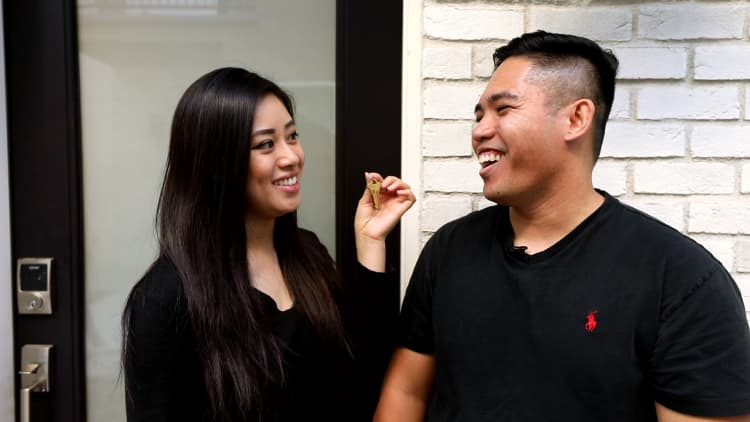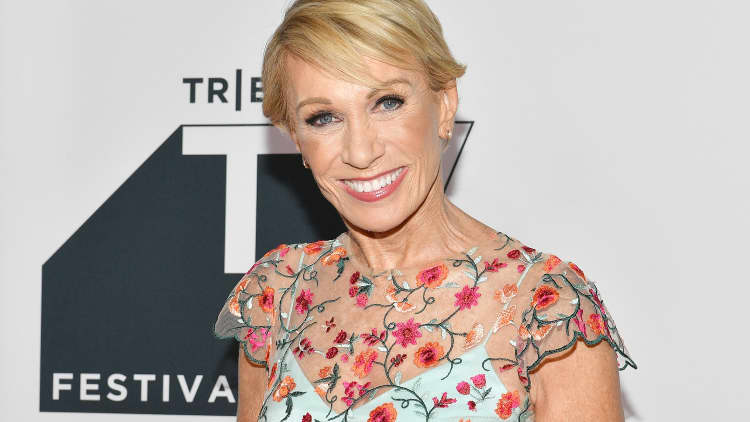Buying a home has long been considered part of the American Dream — but it isn't for everyone. If you're content renting and have no desire to own a home, email reporter Alicia Adamczyk at alicia.adamczyk@nbcuni.com with your story for a chance to be featured in a future Make It article.
There are countless things to consider when buying a home, but one aspect you might overlook is the kind of account in which to stash your down payment savings.
Picking an account is a fairly simple decision that comes down to your time line to buy and your risk tolerance, Shelby McDaniels, channel director of corporate home lending at JPMorgan Chase, tells CNBC Make It.
If you're buying soon and want a save haven, then you're going to pick a more conservative account like a checking or high-yield savings account. If you plan to buy in a few years, a brokerage account could work for you.
Here's a closer look at the different accounts that work for different types of savers.
Checking or savings account
Most people saving for a house use their checking account or open a separate savings account, McDaniels says. It's often the simplest solution, since the money is readily accessible and it's easy to automatically transfer savings to these accounts. These accounts are also the safest places to stash your savings.
If you're planning to buy within three to six months then you'll want the liquidity offered by these accounts. Your best bet is to open a high-yield savings account at a bank or cash account via a fintech platform like Betterment or Wealthfront. These accounts offer a higher interest rate than traditional savings account: Right now, the higher-yield options offer just under 2%, compared to 0.09% for your average account.
Certificates of deposit
Certificates of deposit are a step removed from checking and savings accounts: While they are still safe financial accounts to house your savings, you are required to lock up your money for three, six or even 12 months at a time, in exchange for a guaranteed interest rate.
The appeal is that traditionally, those rates have been higher than what a savings accounts offers. That isn't always the case now, though, so you'll want to compare all of your options.
Still, Marcus by Goldman Sachs offers a one-year CD with a 2.15% APY with a minimum deposit of $500, one of the best available right now, per Bankrate. Savings and cash account yields have been slipping and most are now below 2% (and the average savings account offers 0.09%, per the FDIC).
"You will want to ensure the time frame you are required to keep the money there aligns with the time frame you are planning on," McDaniels says.
Only use these accounts if you can find a better interest rate than a savings account offers and the CD's term fits into your home-buying timeline.
Investment account
Investing your savings could help it grow, but remember, nothing is guaranteed in the stock market. Be careful with this strategy and really consider your risk tolerance.
"Someone who starts saving for a home several years in advance might choose to use an investment account because they are good with market fluctuations," says McDaniels. It's not common, but it is an option if you don't foresee home ownership in your immediate future: At least six months away, but more likely, years down the road.

If this is your plan, you'll want to invest via a brokerage account, says McDaniels. Don't plan to take money from a retirement account. Withdrawing funds from a 401(k) or IRA means paying potential penalties, though there are some special cases in which you can withdraw money from these accounts for a down payment.
Although one in five millennials planning to buy a home say they intend to withdraw money from a retirement account, if you can't afford to buy a home without tapping those savings, you likely can't afford to be a homeowner, with all of the extra expenses that come with it, right now.
In the case of a 401(k) loan specifically, you have to repay what you borrowed, which means adding another monthly bill. It could also impact what or if a lender is likely to offer you for a mortgage, says McDaniels. Never mind all of the potential investment gains you're missing out on by pulling out your retirement savings.
Get started saving for a down payment
Like any financial decision, saving for a down payment will depend on countless factors unique to your personal situation. You'll want to research typical prices in your area and get a handle on your credit score.
McDaniels also says to be prepared for expenses beyond the down payment: Inspections, new furnishings, moving costs — all of these add up, and you need the savings to pay them. "Having three to six months of your mortgage payment in savings is always a good rule of thumb once you own a home," she says.
It can be overwhelming to begin saving, but McDaniels says to start by automatically sending $50 or even just $10 a month to a savings or investment account. What really matters is that you have a goal and a plan to achieve it.
"That's going to grow faster than you really think," she says. "I believe no matter what it is in life, if you have a goal to work toward, you get there sooner."
Saving for a down payment? Here are some more resources to better understand the process:
- How much the average home costs in 2020
- What the FICO credit score changes mean for first-time homebuyers
- How to buy a house in 8 steps
- Want to buy a house? This is how long you'll have to save
You can also follow CNBC Make It's Millennial Mortgage series, which details how people across the country are making their homeownership dreams a reality.
Don't miss: This 33-year-old paid off his $300,000 house in 3 months—here's why he didn't invest the money
Like this story? Subscribe to CNBC Make It on YouTube!



